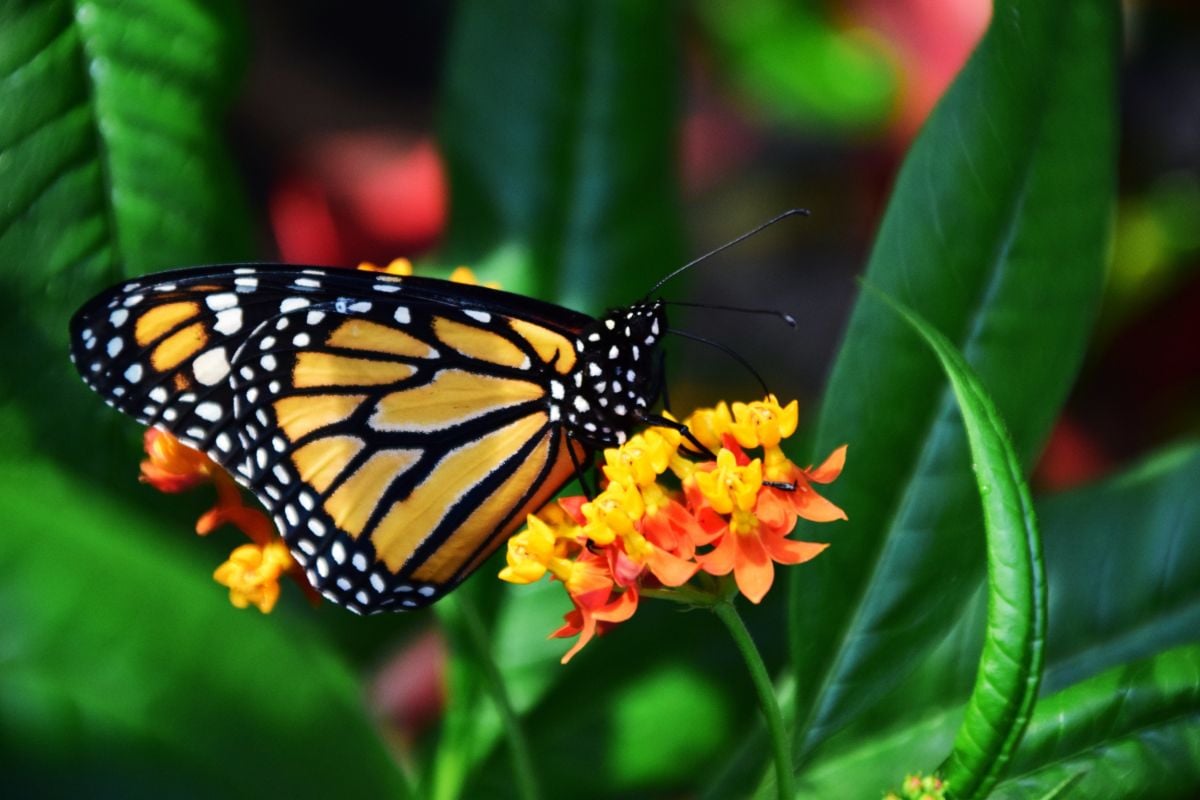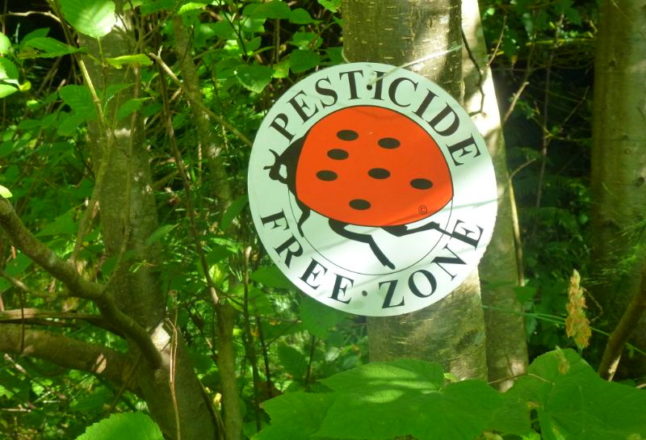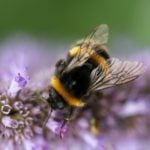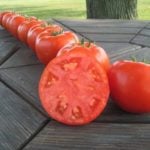
Creating a pollinator-friendly garden is one of the easiest and most important ways to help pollinator species thrive. Populations of helpful insects like monarch butterflies and native bees are in trouble, and luckily, it’s easy to help while also beautifying your yard.
Here are the six steps to build your pollinator garden:
1. Choose Your Location
2. Identify Your Soil Type
3. Plant Native Species
4. Know When To Grow
5. Use Pesticides and Herbicides Carefully
6. Add Some DIY Accents

1. Choose Your Location
The first step to setting up a pollinator garden is to make sure you’re planting it in the right place. Like most of the best pollinator garden plants, honeybees, butterflies, and hummingbirds love sunshine. Choose an area with as much sunlight as possible and some protection from the wind.
Once you’ve scoped out the ideal spot, plant your garden in clumps rather than rows. This will make your flowers easier for pollinators to find, ensuring you’re drawing a friendly buzz of life to your yard.

2. Identify Your Soil Type
Before you plant, it’s important to know what kind of soil you’re planting in. There are six soil varieties –- clay, sandy, silty, loamy, chalky, and peat –- and different plants will thrive in each. Using a few hands-on tests, it’s easy to get to know the soil in your backyard.
When you have an idea of what soil you’re working with, you’ll want to look for plants that thrive in it. Bergamot (also known as bee balm) grows well in clay soil and attracts plenty of bumblebees, while fragrant lilacs flourish in chalky soil and are a magnet for butterflies and hummingbirds.

3. Plant Native Species
To draw pollinators, plant native plants that they will recognize and that are low-maintenance for you. These species are naturally primed for the characteristics of your region’s ecosystem, including attracting native pollinators.
Stay away from hybrid flowers, which have often had pollen and nectar bred out.
Which native plants work best in pollinator gardens? Look into indigenous milkweed and wildflower varieties for extra pollination allure, and add some native host plants to cultivate caterpillars.
Many native species are also natural perennials, making them easy and affordable plant choices for your garden that will woo pollinators to your flowers for years.

4. Know When to Grow
You’ll want your garden to be able to support pollinators year-round, so choose a wide variety of plants that will keep blooming from early spring through the late fall. Consider adding some night-blooming flowers to the mix, to make sure nocturnal pollinators like fireflies and moths aren’t left out.
If you plant your garden from seeds, sow them by the fall or winter for extra time to sprout before summer. Nursery flowers will cost a bit more, but they’ll attract pollinators in the same season if you’re short on time.

5. Use Pesticides and Herbicides Carefully
It’s tricky to strike the right balance when it comes to protecting your pollinator garden from less desirable plant species and critters. For a happy and healthy garden, limit your pesticide use to organic alternatives like diatomaceous earth and natural landscaping barriers, so you don’t accidentally harm pollinators.
Some plants typically classified as weeds can be beneficial host species for larvae, but others could choke out the flowers you’ve worked so hard to grow. Non-toxic weed control strategies like mulch and homemade vinegar spray will keep weeds away while allowing your pollinator garden to thrive.

6. Add Some DIY Accents
Want to create some extra food sources in your garden? Make sure pollinators get all the nutrients they need using items you already have in your pantry. Try making a hummingbird feeder from recycled bottles or spice jars. Homemade nectar is simple to make –- just mix four parts water with one part table sugar, and clean your feeder thoroughly every couple of weeks.
In addition to nectar, butterflies and bees get key natural resources from salt. Create a salt lick by mixing table salt or sea salt into a puddle or damp region in your garden. For the perfect spot, look near a dripping faucet, a birdbath, or your outdoor irrigation system. You can also leave a sponge in a dish of lightly salted water to create the same effect.
FAQ About Starting a Pollinator Garden
Aim for plants that will make your garden a home –- nectar plants for feeding, host plants for larvae, and shelter plants for bad weather are all important plants that should be in a pollinator garden. Native plants are naturally recognizable to pollinators, and many are perennials that will keep coming back year after year.
Pollinator gardens are an easy and important way to help beneficial insects by giving them a wildlife habitat in your yard. Building one is good for the environment and your lawn, inviting butterflies, bees, and more to pollinate your plants.
If you’re starting your pollinator garden from seeds, they should be planted by fall or winter so they have enough time to grow. Try to plant plants that grow in a variety of seasons, so your pollinator garden blooms year-round.
Pollinator Gardening Made Easy
Creating a pollinator garden is a great way to help beneficial insects and hummingbirds in your area while also making your yard look great. Just follow the 6 steps above to get started on the pollinator-friendly garden of your dreams.
And if you need help with landscaping the rest of your yard or regular care of your lawn (mowing, trimming, edging, and blowing), LawnStarter’s landscaping pros are just a click or quick call away.
Main Photo Credit: Pixabay / Pexels





